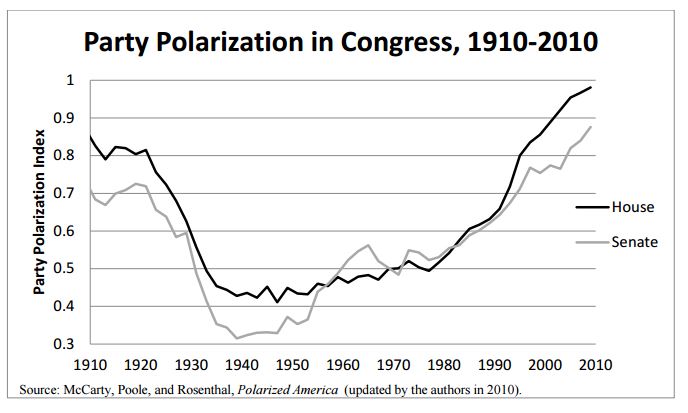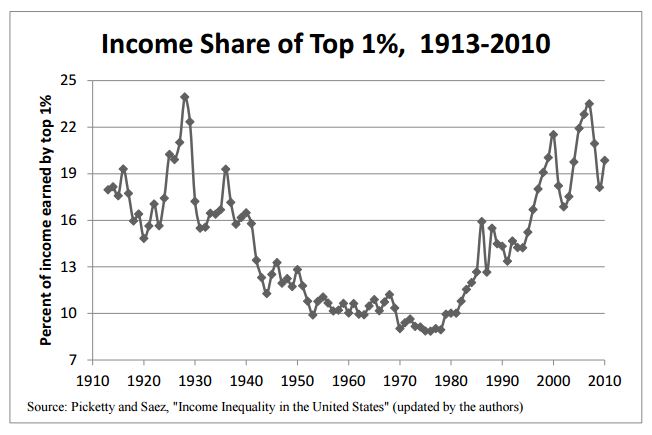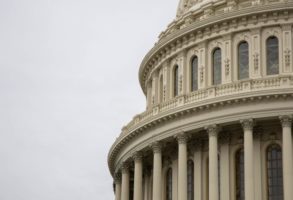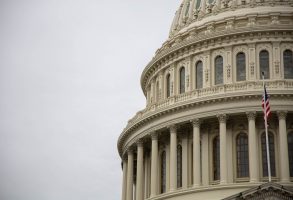
Published May 17, 2017
Joint Economic Committee of the United States Congress
The following testimony was delivered by EPPC Hertog Fellow Yuval Levin at a hearing of the the Joint Economic Committee of the United States Congress on May 17, 2017.
Chairman Tiberi, Ranking Member Heinrich, Vice Chairman Lee, and members of the committee: Thank you for the opportunity to testify today.
It is very encouraging to see the Joint Economic Committee turn its attention to the question of social capital. Too often in our policy debates, we incline to separate the purely economic from the social and interpersonal facets of the challenges Americans confront, and by doing that we fail to understand any of these challenges very well.
Considering social capital is a particularly constructive way to better understand obstacles to mobility and opportunity in America because it offers us the promise of overcoming the familiar partisan division between focusing on money and focusing on culture.
The fact is that our country has become deeply divided and fragmented in ways that create some particularly pernicious and complicated obstacles for Americans trying to rise out of poverty. And our political system has struggled to pin the blame for this phenomenon somewhere without fully acknowledging its character. The Left tends to see economic inequality as the root of all other forms of social fracturing, and argues therefore that a policy of more aggressive redistribution would not only help ease income inequality but also mitigate the political power of the wealthy, strengthen poor communities and families, and create more opportunities for all. An emphasis on cultural problems like family breakdown, many progressives now suggest, is a distraction from these real causes—if not an attempt to blame the victims and opportunistically advance an oppressive cultural agenda that can only further burden the most disadvantaged.
The Right sees cultural disintegration—marked especially by the breakdown of family and community—as the source of the persistence of entrenched poverty in America. Conservatives therefore argue that social policy must focus on family and community, and worry that the Left’s misguided efforts to address entrenched poverty through greater economic redistribution can only make things worse by hampering the economy, distorting the personal choices of the disadvantaged with perverse incentives, and exacerbating dependency.
In an effort to avoid the rather obvious conclusion that cultural and economic factors are inseparable, progressives and conservatives thus tend to exaggerate the implications of their favored explanations. They predict that either growing inequality or increasing family and cultural breakdown, respectively, will turn out to be unsustainable, and so lead to a cataclysm, or a rip in the social fabric that will force a great reckoning.
But things are likely both better and worse than that: Both growing inequality and increasing social breakdown may well be sustainable, but may not be compatible with human flourishing. We are not headed for a cataclysm, but we are stuck in a rut, and getting out of it will require understanding it. No moment of change will be forced upon us, so if we are to revive the fortunes of the least among us, we will need to act.
Our debates about whether culture or economics ultimately matters most keep us from seeing what kind of action might be plausible. These debates often implicitly revolve around the question of whether we should attempt a reversal of the significant liberalization of the past half century and more in the economic sphere (as the Left would prefer) or the social sphere (as the Right would like), when the fact is that we stand little chance of any wholesale reversal in either realm. This leaves us with a politics of dual denial: In any given policy debate, one party (be it Republicans on cultural matters or Democrats in economics) denies the fact that the liberalization of our society’s way of life is a dominant and essentially irreversible fact about contemporary America while the other party denies that this fact entails some very significant problems.
To see that the challenges we face are in many respects the opposite side of the coin of the advantages we possess is not easy for anyone in our politics. We all want to believe we can have the good without the bad—progress without a price. And not only that, we also tend to believe this is possible because we tend to believe it has happened in our country before. Our political culture now lives under the sway of an intense nostalgia for a period we believe embodied this extraordinary possibility: the roughly two decades that followed the end of the Second World War.1
The America that our exhausted, wistful now politics misses so much, the nation as it first emerged from the Great Depression and World War II and gradually evolved from there, was exceptionally unified and cohesive. It had at first an extraordinary confidence in large institutions—big government, big labor, and big business that would work together to meet the nation’s needs. That confidence is just stunning, from our vantage point.
America’s economic life in that period was highly regulated and consolidated, as depression-era and wartime controls were only slowly loosened. But in the wake of a war in which most of its competitors had burned each other’s economies to the ground, America utterly dominated the world economy, offering economic opportunity to workers of all kinds—high skill and mid-skill and low skill.
America’s cultural life at midcentury was no less consolidated. It was dominated by a broad traditionalist moral consensus. Religious attendance was at a peak, families were strong, birth rates were high, divorce rates were low. So inequality and family breakdown were both contained in that era; opportunity and cultural cohesion were both strong. At least for whites in America, which is no small caveat of course, that time really was exceptional.
But almost immediately after the war, that consolidated nation began a long process of unwinding and fragmenting. Over the subsequent decades, the culture liberalized and diversified, as struggles against racism and sexism coincided with a massive increase in immigration. Meanwhile, some key parts of the economy were deregulated to keep up with rising competitors, and our labor market was forced by globalizing pressures to specialize in higher-skill work that has diminished opportunities for Americans with lower levels of education. And in politics, an exceptional mid-century elite consensus on some key issues gave way by the 70s to renewed divisions that got sharper and sharper.
In one arena after another, America in the immediate postwar years was a model of consolidation and consensus, but through the following decades that consensus fractured. By the end of the 20th century, this fracturing of consensus grew from diffusion into polarization—of political views, economic opportunities, incomes, family patterns, and ways of life. We have grown less conformist but more fragmented; more diverse but less unified; more dynamic but less secure.
All of this has meant many gains for America: in national prosperity, in personal liberty, in cultural diversity, in technological progress, in social justice, and in options and choices in every realm of life. But over time it has also meant a loss of faith in institutions, a loss of social order and structure, a loss of national cohesion, a loss of security and stability for many workers, and a loss of cultural consensus. Those losses have piled up in ways that now often seem to overwhelm the gains, and have made our 21st century politics distinctly backward-looking and morose.
Conservatives and liberals have emphasized different facets of these changes. Liberals treasure the social liberation and the growing cultural diversity of the past half century but lament the economic dislocation, the loss of social solidarity, and the rise in inequality. Conservatives celebrate the economic liberalization and dynamism but lament the social instability, moral disorder, cultural breakdown, and weakening of fundamental institutions and traditions.
But these changes are all tied together. The liberalization that the left celebrates often is the fragmentation the right laments, and vice versa. That set of forces—liberalizing, fragmenting, diversifying, fracturing—have defined our country’s past half century both for good and for bad.
In very broad terms, the first half of the 20th century, up through World War II, was an age of growing consolidation and cohesion in American life—as our economy industrialized, government grew more centralized, the culture became more aggregated through mass media, and national identity and cohesion were often valued above individuality and diversity. In those years, a great many of the most powerful forces in American life were pushing each American to become more like everyone else. And the nation that emerged from World War II was therefore highly, profoundly, exceptionally cohesive.
The second half of the 20th century (and these opening decades of the 21st century too) then marked an age of growing deconsolidation and decentralization—as the culture became increasingly variegated and diverse, the economy gradually diversified and in some respects deregulated, and individualism and personal identity came to be held up above conformity and national unity. In these years, a great many of the most powerful forces in American life have 4 been pushing each American to become not more like everyone else but more like himself or herself.
Across a wide range of different facets of our national life, the past century has therefore seen a pattern of drawing together and then pulling apart. American society became intensely consolidated and cohesive as it modernized through the middle of the 20th century, and then more diverse and diffuse.
There are many ways we might illustrate this pattern, but perhaps three distinct representations will suffice to help us see its broad outlines. In the social arena, we would want some measure of the diversity of our society as it has changed over time. The percentage of Americans born abroad is one plausible metric on that front, and as tracked by the Census Bureau over the past century or so it reveals a pattern of dramatic change:
In the political arena, there is probably no similarly convenient metric, but a measure of polarization will provide one gauge of unity and disparity in our democracy. Examining party loyalty in congressional roll-call votes over more than a century, political scientists Nolan McCarty, Keith Poole, and Howard Rosenthal crafted an ingenious index that quantifies party polarization in Congress, and the picture it provides gestures toward a similar pattern.
In the economic arena, the most commonly used measure of polarization and cohesion is income inequality. Debates have long raged about exactly what figures best represent the relevant facts about inequality, but a measure of the proportion of all income earned by the top 1 percent of earners has been commonly used to stand in for overall trends. Economists Thomas Piketty and Emanuel Saez have used income-tax data to track that percentage over the past century, and the pattern they discern looks like this:
In all three cases, and many others that have followed a similar trajectory, what we see are very significant changes, not slight ups and downs. They tell a tale of intense consolidation followed by intense diffusion.
This pattern shows us that mid-century America straddled two broad trends, which surely contributed to its exceptional character. It experienced the liberalization of a consolidated society. Many Americans in that time could therefore take for granted some of the benefits of consolidation (like relatively stable families and communities, confidence in institutions, a sense of national purpose, modest inequality, a broad moral consensus, and robust cultural cohesion) while actively combatting some of its least attractive downsides (like institutional racism, sexism, overbearing cultural conformity, and a dearth of economic freedom). Combined with America’s unique global economic position following the Second World War, this made for a period of unprecedented prosperity and confidence.
But it was an inherently unstable and unsustainable combination of circumstances. The liberalization that was so important to the character of postwar America was bound to undermine—indeed, was intended to undermine—the consolidation that played a no less important part in forming that unusual moment. Over time, therefore, the change became the context, and Americans could no longer take stability, cohesion, and self-confidence for granted as a counterforce to their growing individualism and dynamism.
The powerful nostalgia for the 1950s and early 60s that so dominates our politics is, in essence, a longing for a safe and stable backdrop for various forms of liberalization—be it toward a culture of expressive individualism or toward market economics. But Americans have plainly valued these forms of liberalization more than we valued the backdrop, and it is folly now to wish we could recapture the very circumstances that America has been systematically demolishing for six decades and more just so we could more comfortably engage in the very same demolition.
That process of liberalization has now done its work, and our society is its result. We are a highly individualistic, diverse, fragmented society—economically, politically, and culturally. And none of that is about to be undone. So we will have to solve our problems as such a society. Both our strengths and our weaknesses are functions of this path we have traveled together, and we will now have to draw on those strengths to address those weaknesses.
That last part is what we find so hard to accept. Some of the most serious problems we face are not just obstacles to our pursuit of our society’s highest hopes but also consequences of that pursuit. In liberating many individuals from oppressive social constraints, we have also unmoored and estranged many from families, communities, work, and faith. In enabling a profusion of options and choices in every part of life to meet our particular needs and wants, we have also unraveled the established institutions of an earlier era, and so unraveled the public’s broader faith in institutions of all kinds. In loosening the reins of cultural conformity and national identity and opening ourselves to an immense diversity of cultures, we have weakened the roots of mutual trust. In unleashing markets to meet the needs and wants of consumers, we have freed them also to treat workers as dispensable and interchangeable. In pursuing meritocracy, we have magnified inequality. In looking for a more personalized, representative politics we have propelled polarization. In seeking to treat every person equally and individually rather than forcing all to conform, we have accentuated and concentrated the differences between the top and bottom in our society, and hollowed out the middle.
In all of these ways and more, as patterns of diffusion evolve into patterns of bifurcated concentration—of a top and a bottom separated by a great chasm—we have done more than change the structures of institutions and relationships. We have altered the shapes of lives and souls. We have set loose a scourge of loneliness and isolation that we are still afraid to acknowledge as the distinct social dysfunction of our age of individualism, just as a crushing conformity was the characteristic scourge of an era of cohesion and national unity.
And yet, for all that, this is not an indictment of our time. We could surely make the case that the benefits of all of this in personal freedom, wealth, justice, and happiness have been worth the costs on the whole. But that does not release us from the obligation to confront the costs, and to do what we can to address them.
So what can we do? If we do not want to give up the gains our country has made but we do want to mitigate somehow the price we have paid for those gains, what options might we have? This is where social capital becomes essential, and why it is so important to take it up today. Social capital is what allows people to make the most of opportunities, to endure through challenging times, and to thrive amid complexity and change. Social capital describes the thick of our common life—the networks of people and institutions that compose the substance of our society and enable it to function.
Without robust social capital, the material benefits provided by the welfare state could never be enough to enable disadvantaged Americans to rise. Without robust social capital, no amount of moralizing about discipline and responsibility could make a difference in the lives of broken families and communities. Social capital is what makes it possible for help to help.
And the liberalization of our society—both moral and economic—has undermined our capacity to sustain and replenish social capital. That liberalization has advanced under a banner of individualism, seeking to liberate each of us from constricting moral constraints and from oppressive regulation but in the process often also unmooring us from relationships of mutual obligation. And as it has advanced, it has also robbed us of mutual trust, which is an essential ingredient in the development and retention of social capital.
Social capital is built up slowly and exhausted slowly. It is built by long, arduous work constructing relationships, establishing institutions, cultivating norms, shaping expectations, and developing mutual trust. Decline is often slow as well. We can burn this capital for a long time while taking it for granted. But we have lived through a very long decline in social capital in recent decades, and its effects are being visited upon us now—and especially upon the most vulnerable among us.
The steps we incline instinctively to take in response can make the problem worse. The expansion of welfare programs that substitute for thick social networks with a check and the acceleration of efforts to liberate the economy from socially-imposed restraints for the sake of greater growth that might help everyone both tend to exacerbate the pattern by which the mediating layers of our national life are emptied out. Those layers, between the individual and the national state, are where social capital is built up and put to use. And a replenishment of social capital, a recovery of the capacity to make use of opportunities and to endure setbacks, will require a revitalization of those middle spaces.
This is a cause toward which our national politics is not now naturally disposed. Instead, we incline to a politics that answers the problems created by an excessive individualism by further empowering the national government. It is important to see that this inclination is likely a symptom of the problem we are in need of solving.
Radical individualism involves the corrosion of people’s sense of themselves as defined by a variety of strong affiliations and unchosen bonds and its replacement by a sense that all connections are matters of individual choice and preference. It breaks up clusters of people into isolated units. Politically, such individualism tends to weaken mediating power centers that stand between the individual and the nation as a whole—from families to local communities (including local governments), schools, religious institutions, fraternal bodies, civil-society organizations, labor groups, and the small and medium-sized businesses that comprise much of the private economy. In their place, it strengthens individuals on the one hand and a central government on the other, since such a government is most able to treat individuals equally by treating them all impersonally. For this reason, a hyper-individualist culture is likely to be governed by a hypercentralized government, and each is likely to exacerbate the worst inclinations of the other.
Some of the most distinctive problems of our era—the detachment from family, work, faith, and community, and the persistent patterns of bifurcated concentration throughout the American experience—are in important respects functions of a view of society as consisting only of individuals and a state, and are particularly difficult for a nation that often understands itself that way to address. That view of society after all itself advances precisely a form of bifurcated concentration, seeking to empower the individual and the central government and disempower everything in between.
The problems we confront therefore call for solutions that somehow reinvigorate the middle layers of society, and resuscitate our mediating institutions. Those institutions may be the ones most capable of addressing the characteristic problems of our diffusing society—and the isolation and loneliness that are such prominent symptoms of so many of those problems— without requiring the kind of wholesale national reconsolidation and re-centralization that simply aren’t plausible now. They might better allow us to pursue diversity without atomism, profusion without isolation, and a great variety of ways of life without estrangement from the sources of human flourishing.
This would seem to make subsidiarity—the entrusting of power and authority to the lowest and least centralized institutions capable of using them well—a key to addressing the particular problems of our age of individualism. The empowerment of a diverse array of mediating institutions, as opposed to a single, central national authority, was always one important way of dealing with the multiplicity and diffusion of American life before the intense consolidation of the early 20th century, and modernized forms of that approach to social life must now come to serve that purpose again.
Subsidiarity can allow for a pluralism of communities, and so avoid the worst excesses of both conformism and individualism. It can liberate people to pursue the good as they understand it together with others who share their understanding. But precisely by enabling people to be ensconced in a dense web of community rather than alone in the great mass of the public, it can also afford them the opportunity to benefit from moral order and structure and from the aid and love and support that can only be extended at the level of the person.
This does not mean that devolution or federalism offers some magic cure to our problems. But it suggests that we should allow an inclination toward subsidiarity to influence our foremost policy debates. That means bringing to public policy the kind of dispersed, incremental, bottom-up approach to progress that increasingly pervades every other part of American life—an approach that lets authority flow through our mediating institutions, and that solves problems by giving people options and letting their choices drive the process.
Over the past decade and more, ideas rooted in this kind of vision have been developed and refined by a circle of generally younger, policy-minded conservatives. From health care to education to welfare, taxation, regulation, and across the full spectrum of domestic affairs, they have worked to turn this vision into substantive policy proposals.
A similarly decentralized and community oriented progressivism is also imaginable—and we have seen forms of it emerge in our politics from time to time, perhaps most recently in the 1990s. It certainly might come less naturally at first to today’s Left in America. But it could draw upon a rich tradition of progressive localism and community and labor organizing that points in a rather different direction than much of what the American left has emphasized in recent years.
Beyond the familiar applications of this kind of approach—in school choice, say, or in some conservative approaches to health care reform—there are ways that forms of decentralization could be of some use in taking on some of the distinct problems of this particular time. It could help, at least at the margins but maybe also near the core, to combat wage stagnation and the loss of working class jobs for instance by enabling experimentation not only with welfare and wage supports but with different forms of labor law and worker organizing and by encouraging competition in higher education and skills training that can create new opportunities.
It could help us meet the challenge of better enabling economic mobility, as well, by allowing for experimentation with various approaches to assisting Americans in need. Experimentation, after all, is what you do when you do not know the answer. And it is hard to deny that when it comes to our most profound socioeconomic problems in America, we do not have a reliable formula for effective help. The challenge facing welfare reformers is daunting: They have to find ways to help people who lack not only money but often also stable families, functional communities, and decent schools. They have to encourage work and responsibility while offering aid, and they often have to help people break bad habits or confront addiction or abuse while also respecting their dignity and independence. This can’t be done by a government check. Welfare often works best when it is accompanied by advice, by obligations, and by evident compassion at a personal level. Using public resources to let different institutions—from state social agencies to local civic groups to churches and nonprofits—try different ways of meeting this challenge in different circumstances is what we need to do when solutions are not clear, and when it isn’t clear that any one solution will suffice in different circumstances. That kind of policy logic, the logic of subsidiarity, would serve us well in many arenas.
And what about national unity? Decentralization might easily seem like a force for more fragmentation and division, not for unity. But that would be true if the alternative were a cohesive and consolidated polity. Because the real alternative in the lives of many Americans today is actually isolation and a radical individualism, a more decentralized politics can work to draw people out of their narrow circles and into the public arena—toward a common space where Americans can see each other face to face, and where not every question has to be an allor-nothing political fight to the death in Washington.
So subsidiarity, federalism, and decentralization can be a focal point for an agenda of renewal that emphasizes social capital. And given the sorry shape of national politics in America, that kind of focus might attract progressives and conservatives alike.
By beginning closer to the ground, we can start to focus again on what holds us together. Champions of localism and subsidiarity in America love to cite Edmund Burke’s reference to the “little platoons” that make up a society. But we would be wise to remember the context in which that line arises for Burke. It’s not a case for fragmentation but for unity. “To be attached to the subdivision, to love the little platoon we belong to in society,” Burke wrote, “is the first principle (the germ as it were) of public affections. It is the first link in the series by which we proceed towards a love of our country, and of mankind.”
That first link is broken in the lives of many Americans today. And given the particular shape of our problems, we might begin to repair it by taking on more problems where they are found and thinking about politics from the bottom up a little more. This is surely part of what it would mean to take social capital seriously, and to see that the healing our country now badly needs could be made easier if we found ways to lower the temperature of our national debates and instead allow what happens in our near-at-hand communities to matter more.
Ultimately, the ability of public policy (and particularly national public policy) to address the kinds of problems that bedevil countless American communities today is limited. Policymakers in Washington should recognize that, and should avoid building unreasonable expectations or making impossible promises. Politics cannot solve our country’s 21st century dilemmas. But it can play a role in helping us to solve them. And it can begin to play that role by coming to understand the purpose of government as enabling Americans to better help one another. Politics can help, in other words, by taking social capital seriously.
I am enormously encouraged, therefore, by your decision to hold this hearing, and enormously grateful to be invited to take part.
Yuval Levin is the Hertog Fellow at the Ethics and Public Policy Center and the editor of National Affairs.
1 The discussion that follows draws upon my 2016 book, The Fractured Republic: Renewing America’s Social Contract in the Age of Individualism (Basic Books)











